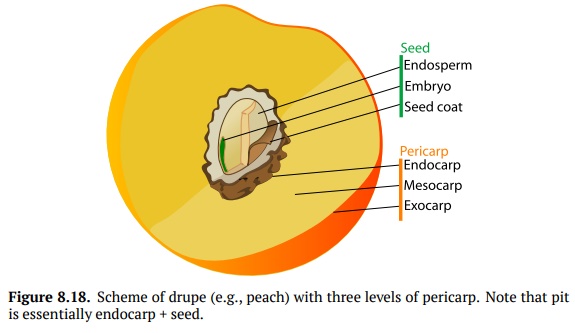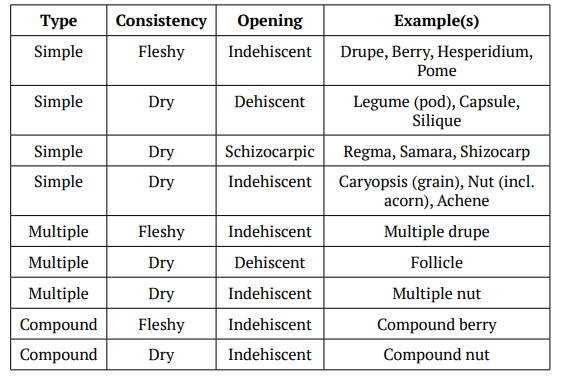Chapter: Introduction to Botany: The Origin of Flowering
Fruit
The Fruit
A fruit is defined as ripened ovary, flower, or whole inflorescence. The origins of the fruit coat and the pericarp (Fig. 8.18) which is comprised of the exocarp, mesocarp, and endocarp, are mostly from the wall of the pistil.

Fruits can be simple,
multiple, or compound. Simple fruits
come from a single pistil (like cherry, Prunus).
Multiple fruits are formed from many
pistils of the same flower (strawberry, Fragaria).
A compound fruit (infructescense)
would be a pineapple (Ananas) or fig
(Ficus) which comes from multiple
flowers (inflo-rescence).
Fruits can be dry or
fleshy. An example of dry fruit is a
nut like peanut (Arachis) or walnut (Juglans). Examples of fleshy fruits include apples (Malus) or oranges (Citrus).
Fruits also delegate
dispersal function to their different parts. Dehiscent fruits (like canola, Brassica)
open and delegate dispersal to individual seeds, inde-hiscent fruits (like papaya,Carica) will not open and will be dispersal units(diaspores) themselves. Schizocarp fruits (like in spurge, Euphorbia or maple, Acer) are in between: they do not open but break into several
parts, and each ofthem contains seed inside. In addition, simple fruits could
be monomerous (1-seeded) like nut or achene (sunflower, Helianthus), or bear multiple seeds (like follicle in tulip, Tulipa). All these different variants
have their own names partly described in the table below:

Related Topics